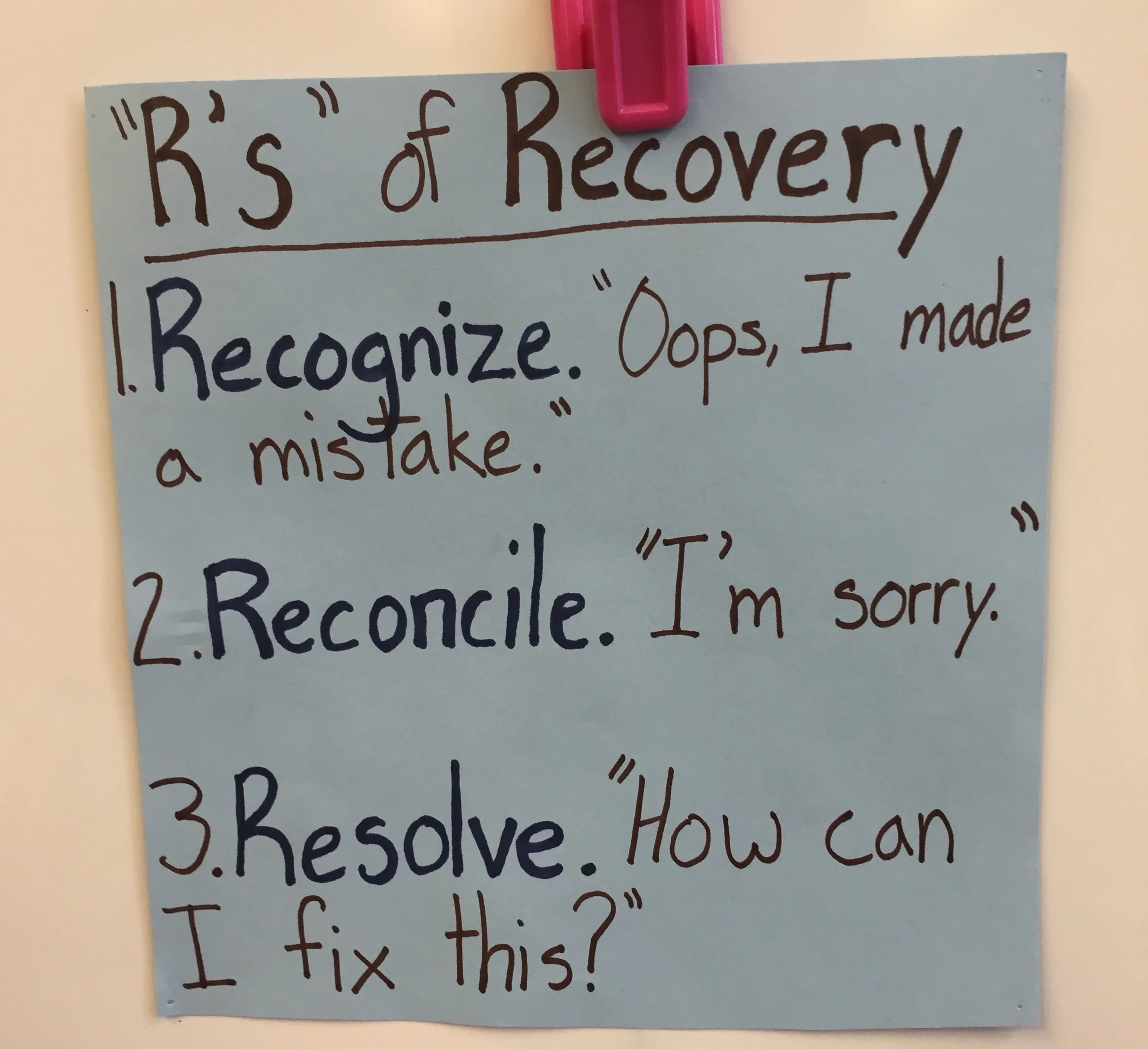As parents, we are rarely at a loss for words. We delight in sharing the knowledge we have gathered over a lifetime, and find joy in teaching our children to navigate their world. Yes, there are topics we may feel uncomfortable talking about, like sex and drugs; but we find a way, and with time, can talk about them with greater ease. As the news of school shootings, terror attacks and random violence occur with greater frequency, we find ourselves in the position of having to explain the unfathomable.
Quick Tip: Values In Action
For more on this topic, check out: What Does Your Family Value?
Positive Discipline in the Classroom: Encouraging Statements
Encouraging statements are a way to give positive feedback to others without the use of praise. Children learn that when we give feedback in a non-judgmental way, it allows the receiver to feel an internal sense of pride and motivation. Students practice both giving and receiving encouraging statements.
Positive Discipline in the Classroom: Effective Listening
In this activity, children discuss how much easier it can be to speak than to be a respectful, effective listeners. They role-play multiple ways of listening that are ineffective and notice how they feel when they are both the talker & the listener. Next, children role-play effective listening strategies and notice what felt different. The image above shows ideas the children brainstormed about what it means to listen effectively.
Positive Discipline in The Classroom: Bringing The Skills Home
Like most schools, my children’s school recently had its curriculum night. This is our 8th year at Giddens School, and each year I am delighted to learn what new skills my children are learning. Of course, I like to know what academic skills they are developing. However, as a parent educator, it’s the social emotional skills that really matter to me.
Positive Discipline in The Classroom: Charlie, The New Student
This is an activity that helps children understand the long-term effects of hurtful words. They are introduced to Charlie, a stick figure drawn on paper. This is Charlie's first day in the class. He has had to change schools a few times, and isn't really liked by his classmates. Students are asked to share statements that might hurt Charlie's feelings. Each time a comment is given, Charlie is crumpled a bit. Pretty soon, Charlie is crumpled into a ball. Students are then asked to share how Charlie is different now. How might Charlie feel at the end of the day? Does Charlie feel like he is a part of the class? Would he want to come back tomorrow?
Positive Discipline in the Classroom: Calm Down Strategies
Positive Discipline in the Classroom: Bugs & Wishes
Positive Discipline in the Classroom: I-Messages
I-Messages are an extension of the Bugs and Wishes Activity. Instead of saying "It bugs me when _______ and I wish you would ________," we include a specific feeling word to convey our emotions. We then state the problem and what we wish would happen instead.
Positive Discipline in the Classroom: Exploring Emotions
A key part of expressing feelings is being able to name them. In this picture, we can see the feeling words children brainstormed to increase their emotional vocabulary. They started with the four basic feeling categories: Mad, Sad, Glad & Scared. From there, they brainstormed what more specific feelings fit in to each of those boxes. This chart provides a visible tool to help student identify feelings they want to express in the classroom.
Positive Discipline in The Classroom: Recovery From Mistakes
In this activity, students learn the 3 R's of recovering from mistakes. They previously discussed that mistakes are learning opportunity. Now, the focus shifts to understanding that making the mistake is less important than what we choose to do about them.
5 Switch Witch Alternatives For Halloween
In case parenting during Halloween is new to you and your family, let me fill you in on the latest trend in candy management. Gone are the days when kids roam free, feeling safe in their neighborhoods and enjoying the pure bliss of securing a mountain of candy. If you thought your kid’s friends would be over for an hour of post trick or treating candy trading, you might be in for a surprise. Instead, a “nice” witch sneaks in, steals your child’s candy, and replaces it with a toy or game.
When a Family Pet Dies: How You Can Help Your Kids Deal with Grief & Loss
When my family’s thirteen-year-old retriever mix Sadie died this September, I was struck by the dual nature of my own grief. On the one hand, I mourned my loving, neurotic girl who had been with my husband and me since before we had children. On the other hand, I was also quite worried about my children’s reactions to her death. Sadie had simply always been around. As we looked back at family pictures, there was Sadie snuggled up next to my newborns, trotted out alongside the kids on their first day of school photos and dressed up as a Halloween pumpkin along with the kids in their costumes. My children had never known a life without our family dog.
Quick Tip: Raising Healthy Eaters
For more on this topic, check out: A Parenting Recipe For Raising Healthy Eaters
Quick Tip: The Purpose Of Chores
For more on this topic, check out Quit Whining & Do Your Chores!
A Way Out Of Whining
Is there any sound more annoying than endless hours of whining? Apparently not! A 2011 study published in the Journal of Social, Evolutionary, and Cultural Psychology found that whining distracts people more than listening to a high pitched chain saw. Performance on tasks and attention decreased more with whining than any other noise they played. Across the board, men, women, parents, and non-parents were equally irritated by the noise, even when the words were in a foreign language. It is a good thing our kiddos are cute!
Video: Postpartum Support For Moms
Watch Parenting Coach Erin Bernau on Q13 Fox News as she discusses postpartum support for new moms.
Should I Stay or Should I Go: Ending Drop-off Drama
Quick Tip: The Way You Come Home
For more on this topic, check out:
Afternoon Delight: How Changing The Way You Come Home Can Change Your Family
Money & Kids: What’s A Parent To Do?
“Mommy, I want that one!” “I have to have the new Ninjago set!” “You’re mean for not getting me those Pokemon cards.” “Every kid at school has an American Girl doll except for me!” A simple trip to the store can become a minefield when you cross into the toy section with a young child. We may vacillate between giving in to the request or denying it, but often without any deep thought or introspection about how and what we want to teach our children about money. Many of us well-meaning parents can get a bit flummoxed when it comes to dealing with money and kids.




















